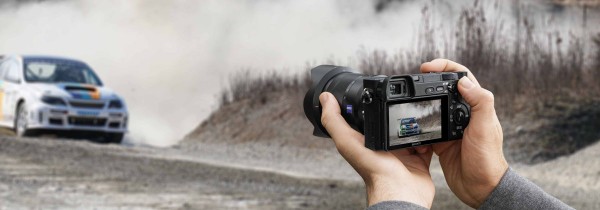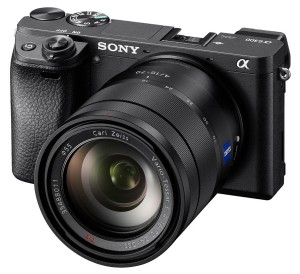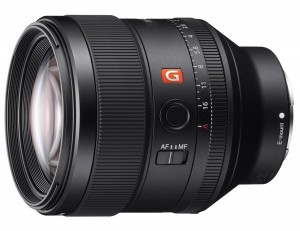
Here is Edgar Alvarez reporting for Engadget on the Sony a6300, their latest E-mount mirrorless camera:
Sony had the right idea with its A6000: It made a powerful mirrorless camera and sold it at a relatively affordable starting price. And people loved it, with Sony claiming it’s been the world’s best-selling mirrorless camera since it came out two years ago. Now the company is following up with the A6300, a $1,000 (body-only) shooter with top-of-the-line specs designed for photographers and videographers alike.
 When it comes to specs, the a6300 really has everything a pro-consumer would want in a camera.
When it comes to specs, the a6300 really has everything a pro-consumer would want in a camera.
- 24.2-megapixel APS-C sensor
- Bionz X processor
- 11-fps continuous shooting
- ISO range of up to 52,000
- 4K video in Super 35mm format
- 4D Focus
That last one, as it turns out, is actually quite important.
Part of what makes the A6300 great for both stills and movies is Sony’s refined 4D Focus, which locks in on subjects in a mere five hundredths of a second, according to the company. The camera’s autofocus system is so fast that, at times, I actually had a little trouble keeping up with it.
And how about the competition when it comes to focusing?
Nevertheless, the prowess of the A6300 is helped by its 425 phase-detect points, compared to the 179 found on the A6000. That, combined with the 4D Focus, makes the A6300’s AF twice as fast as the A6000, according to Sony. And it shows. As someone who’s tested a handful of cameras over the past several months, Sony’s latest mirrorless shooter is definitely the fastest one I’ve tried. Canon’s EOS M3 and Olympus’ E-M5 Mark II are two solid alternatives to the A6300 (and cost about the same too), but don’t expect either of them to be quite as speedy as Sony’s camera.
More after the jump.
This kind of says everything you need to know about the a6300:
Altogether, the A6300 exceeded my expectations. As I mentioned in a previous article about the camera, I didn’t think it was capable of making me forget about higher-end models like the A7R II or A7S II, both of which I’ve used before on a regular basis. But it did. Taking pictures with it is a breeze, and if you’ve used a Sony camera before, you’ll feel right at home. You won’t have trouble finding menu settings you’re comfortable with, and the dials are similar to those found on other Alpha cameras.
 Of course, like all proper ecosystems, it’s best to stick within that company’s line of products like the recently-introduced G Master Lenses.
Of course, like all proper ecosystems, it’s best to stick within that company’s line of products like the recently-introduced G Master Lenses.
I will say, however, that the A6300 performs better when paired with Sony’s new E-Mount lenses, called G Master. During the time I shot with the A6300, I leaned heavily on G Master glass — namely, the FE f/1.4 85mm GM and FE f/2.8 24-70mm GM, plus existing Sony lenses such as the Vario-Tessar 16-70mm and FE 70-200mm. Not surprisingly, the best images I took were with G Master lenses
Alvarez wraps up with:
Sony has done a tremendous job with the A6300. It’s small, sleek, fast and, most importantly, captures impressive photos and video. Paired with the right lenses, the A6300 has no trouble matching up with its more expensive Alpha relatives or even some mid-tier DSLRs. If you can afford them, I’d recommend spending the extra cash on G Master lenses — the image quality you get makes them worth it. Just don’t feel like that’s a necessity, because the camera is still good enough with less expensive E-Mount optics.
I’ve long been itching to replace my NEX-5R and this seems to be the right camera. From 4K video to mic inputs and an ultra-light design – there isn’t a whole lot that I don’t like about the a6300. Sure I wished it had a price closer to $700 or $800 but it’s a solid piece from Sony, no matter if you’re shooting photos or videos. The only problem I personally have is all of the coverage you saw from CES 2016, including our photos and videos, were shot on iPhone 6s. Seeing how I need to be able to publish photos immediately to Instagram and Twitter and take out a camera with little fuss at any point, it’s hard for me to justify a camera like this. For those curious, this was my CES equipment.
Even all of my recent vacations to places like Hawaii and Disney World have been exclusively shot using a smartphone and the results have been nothing short of stellar. However, if I was somebody who took the craft of photography a bit more serious, I can’t help but think this would be my next camera. Two pieces also worth looking at are why the a6300 doesn’t offer sensor stabilization and how the camera’s Face Registration works.
Discuss:
What do you think about the a6300?
[Via Engadget]

You must be logged in to post a comment.